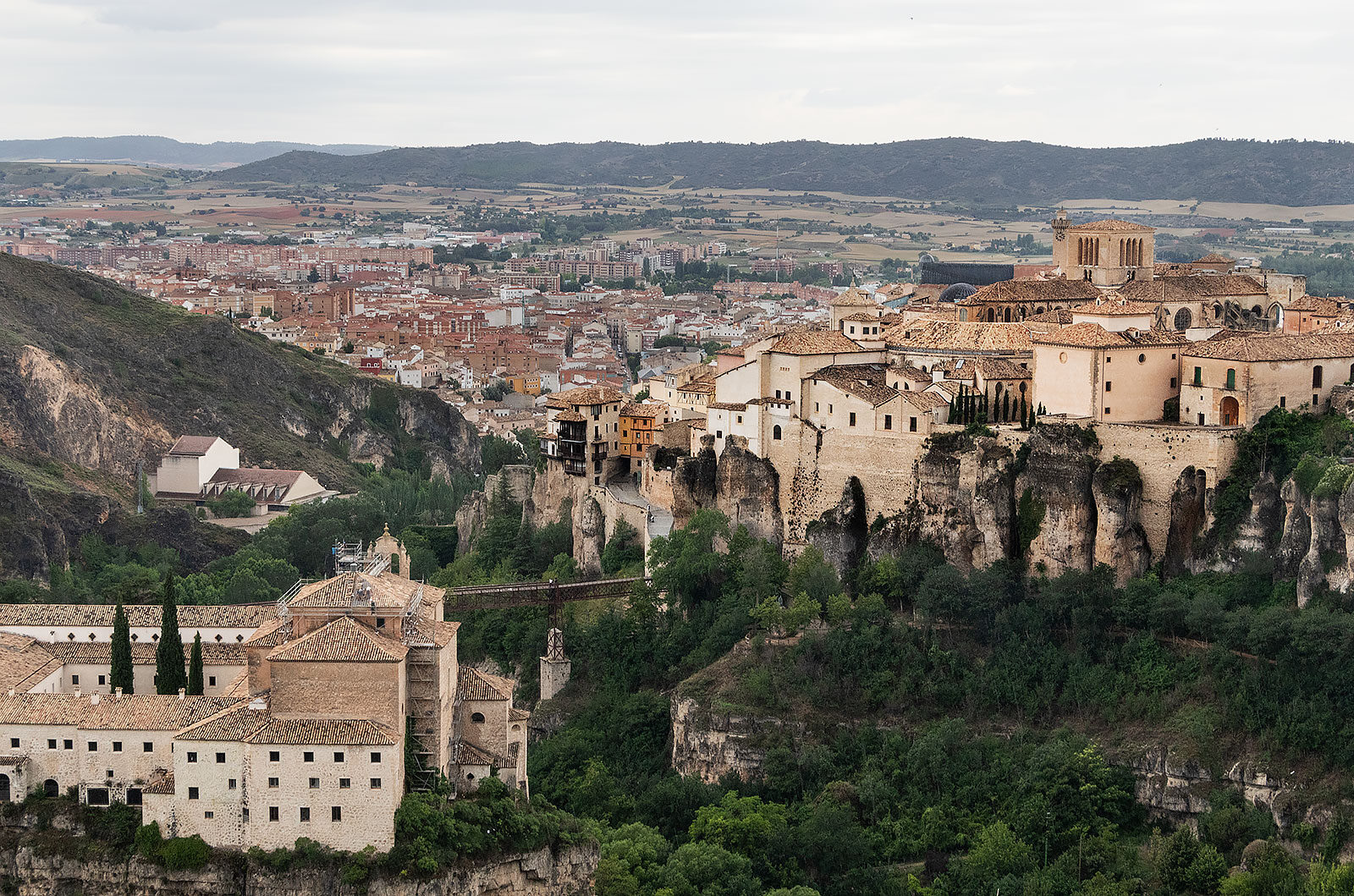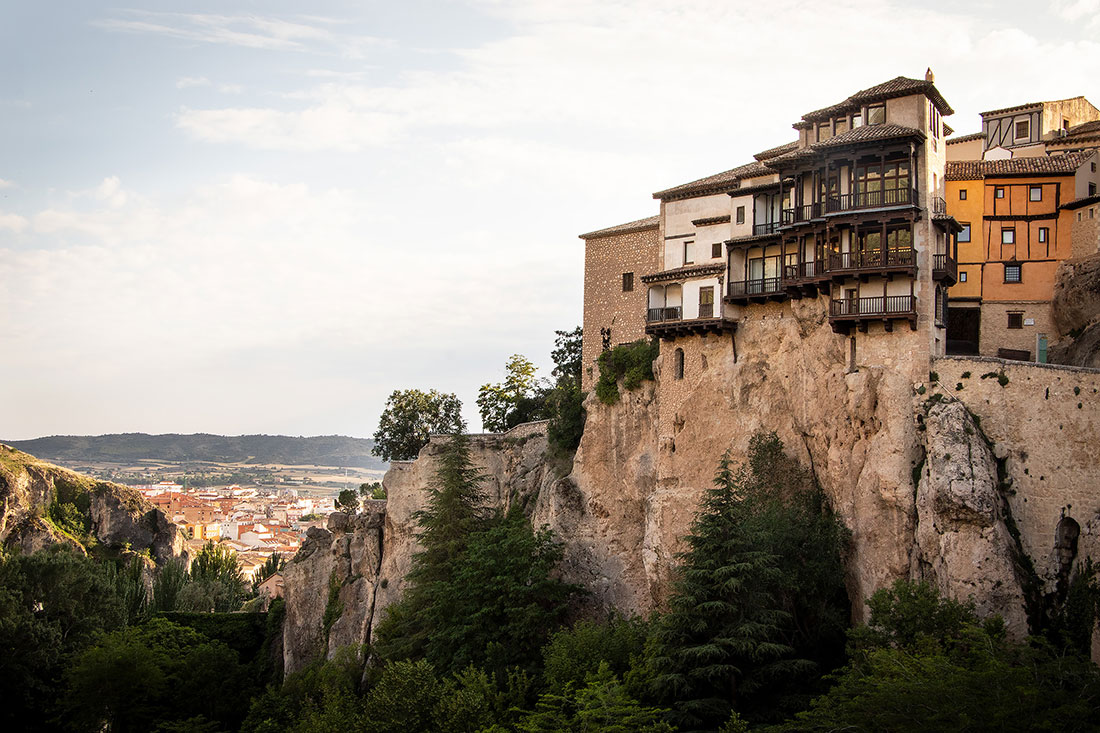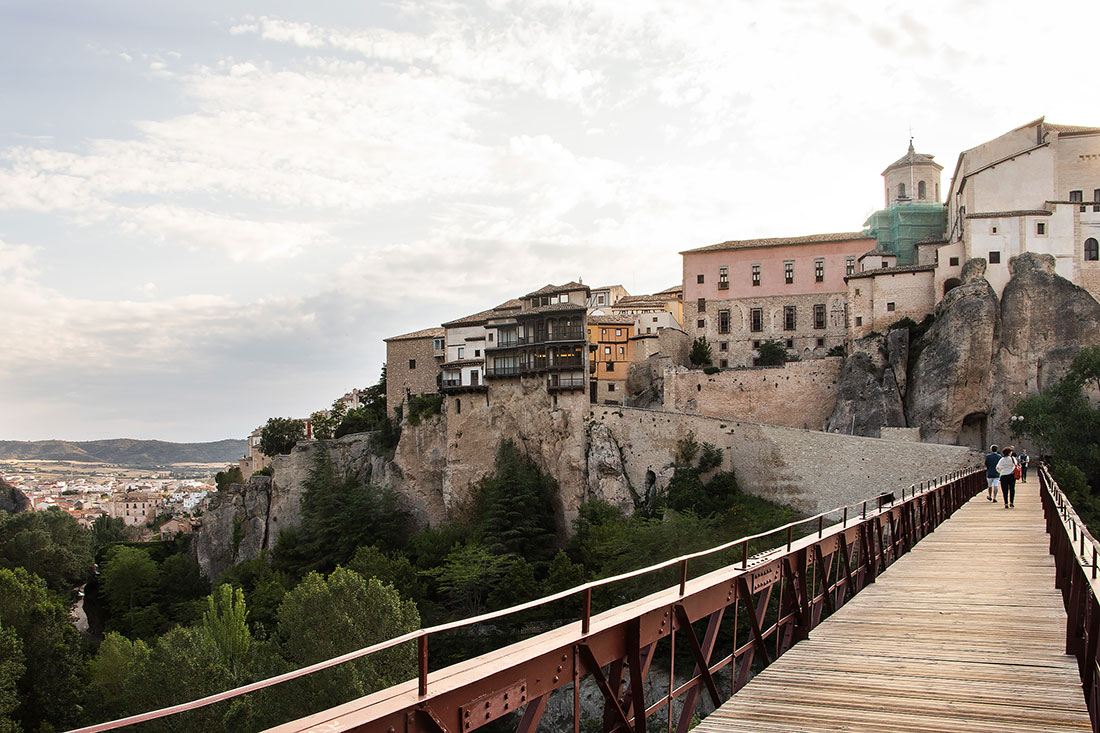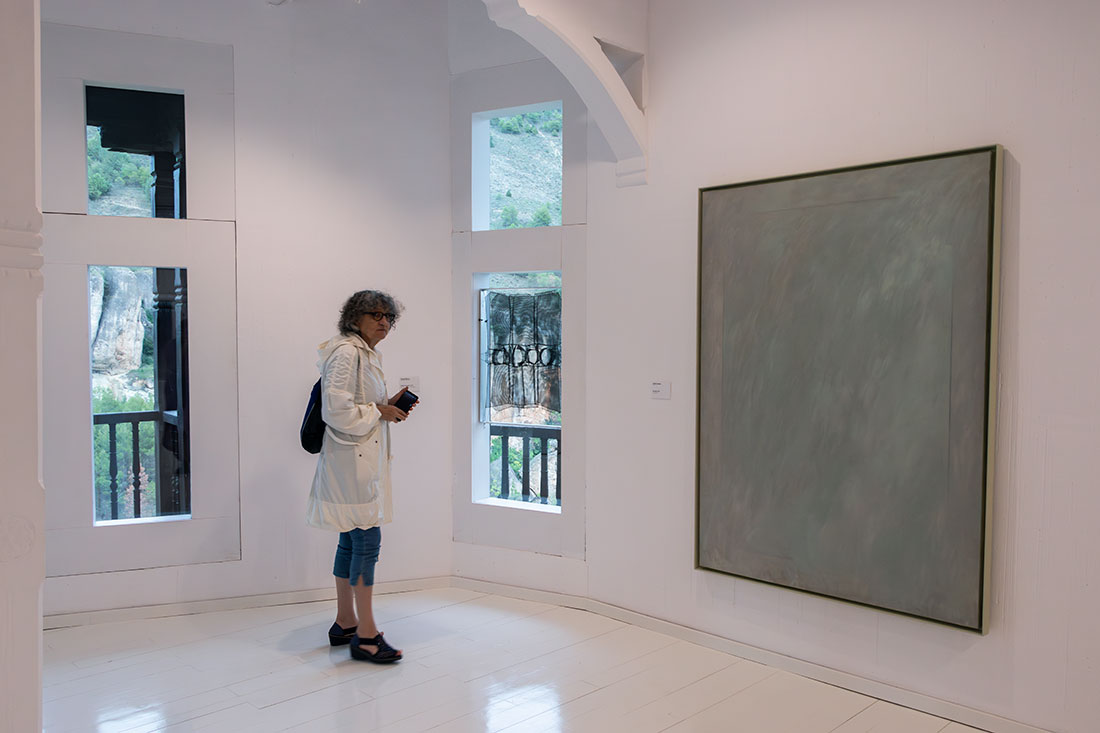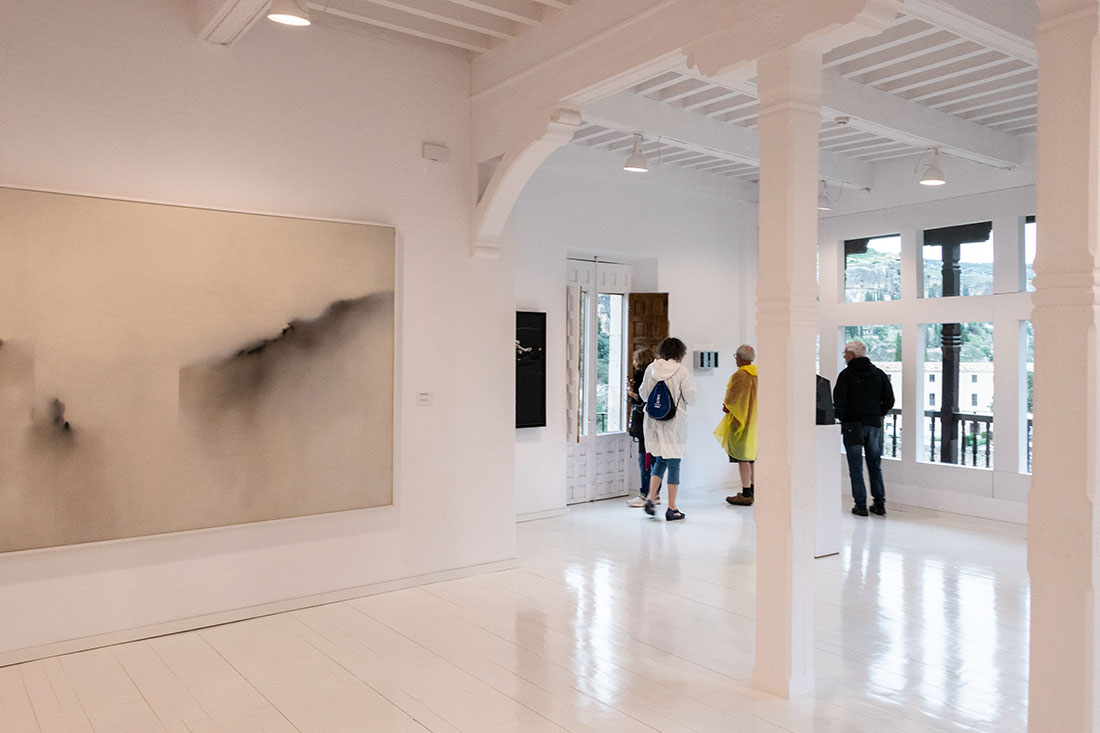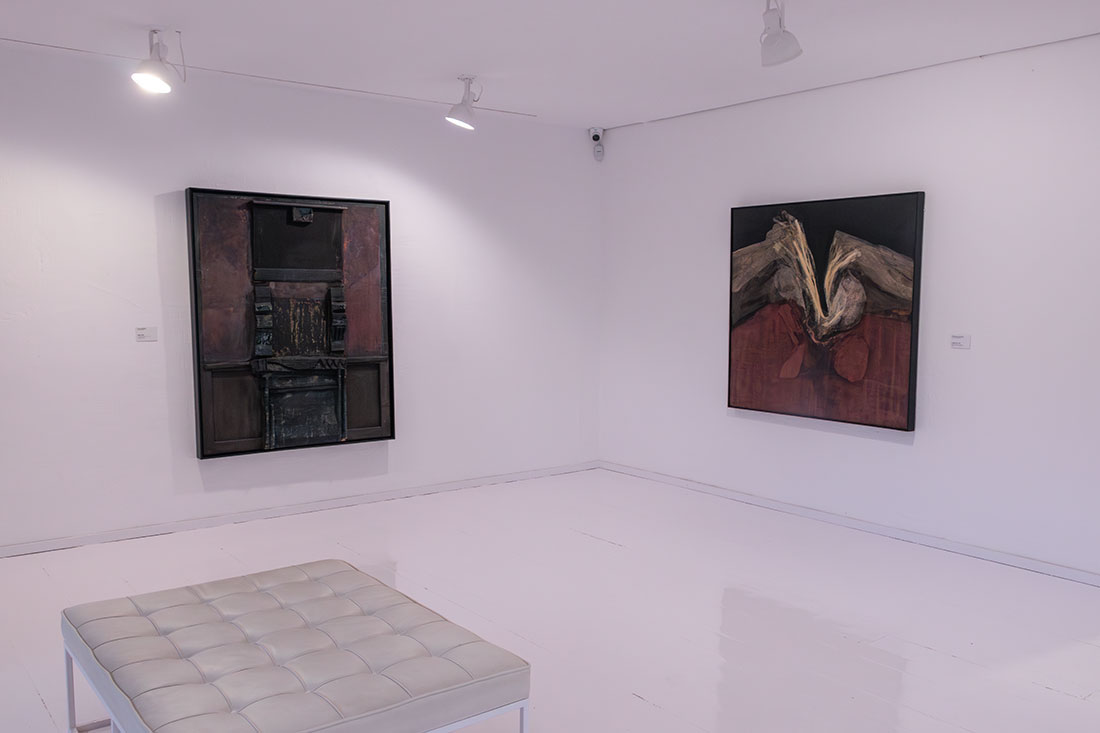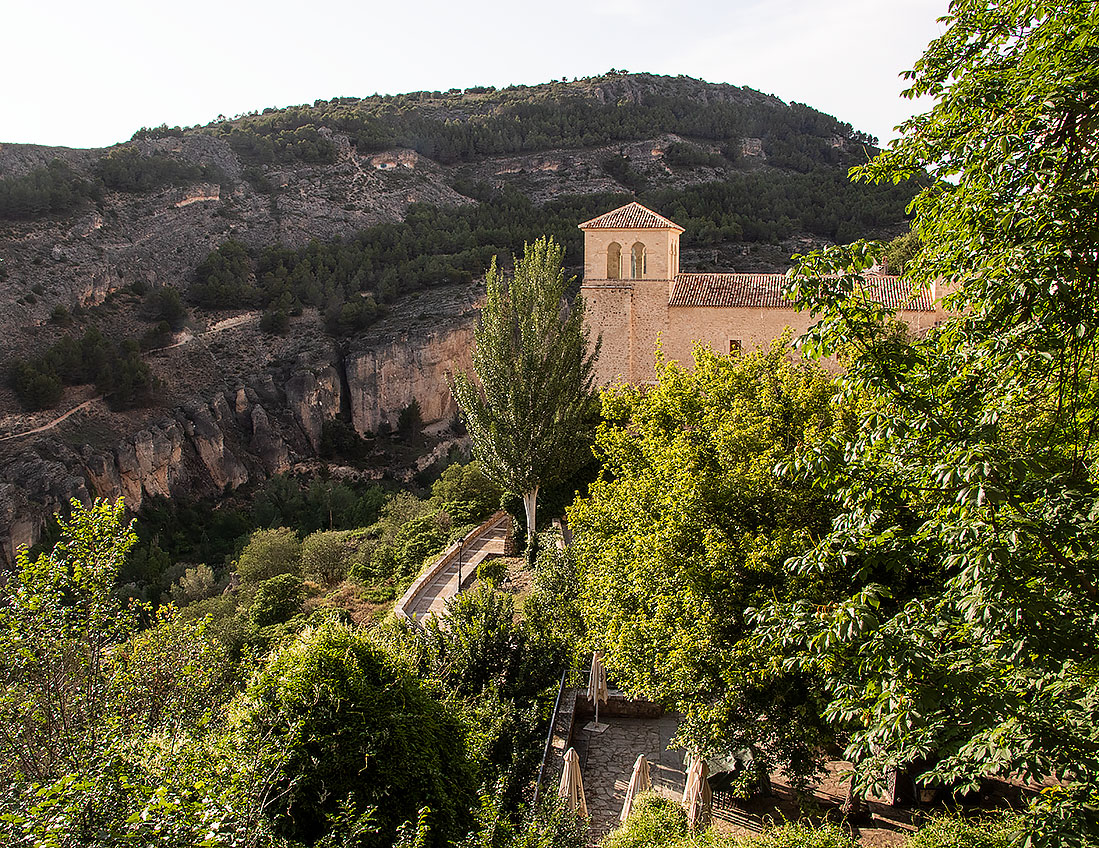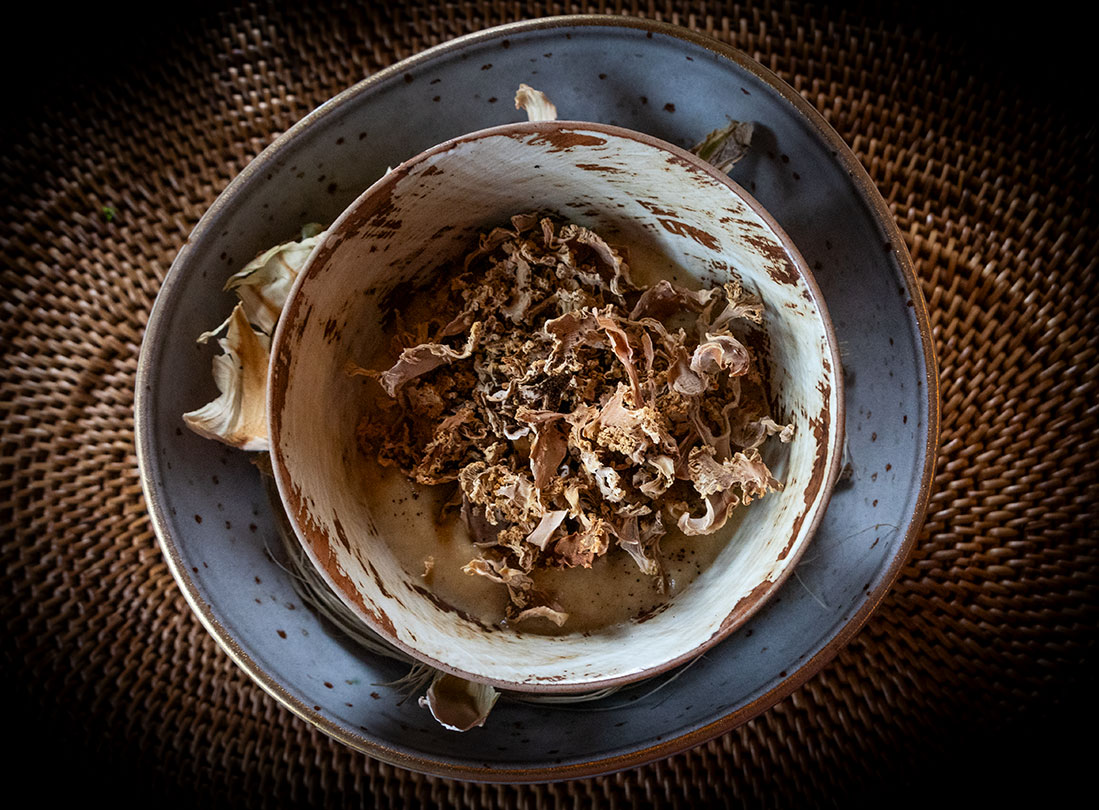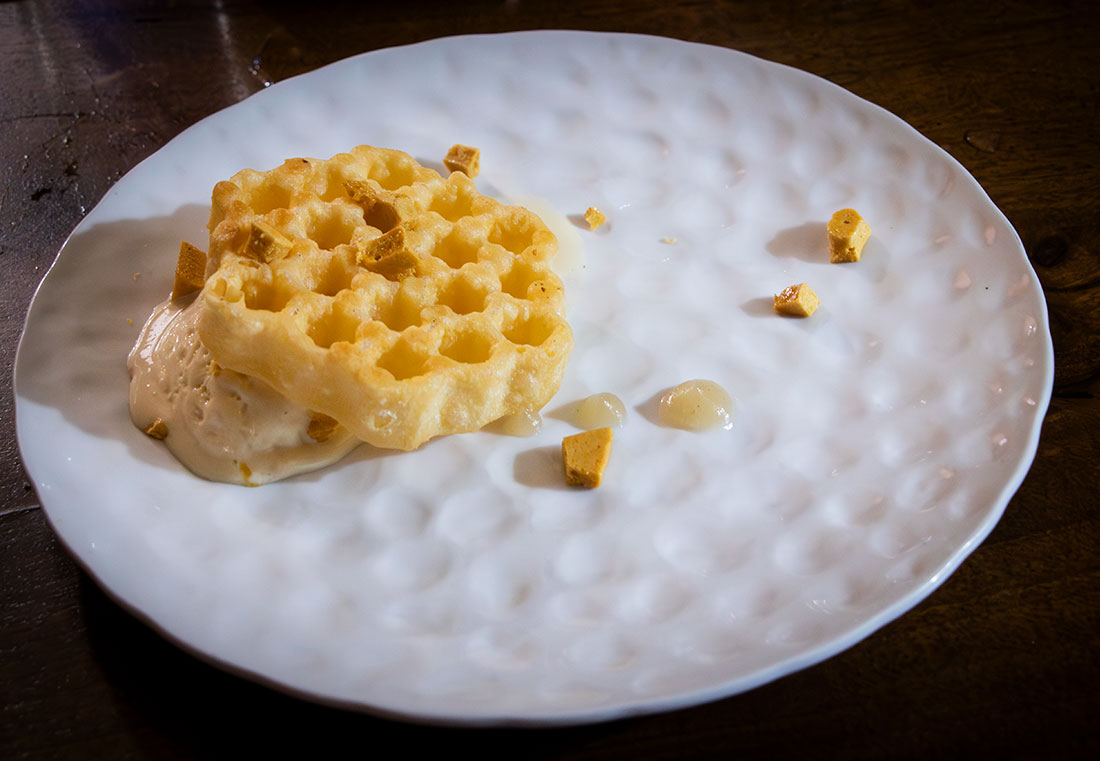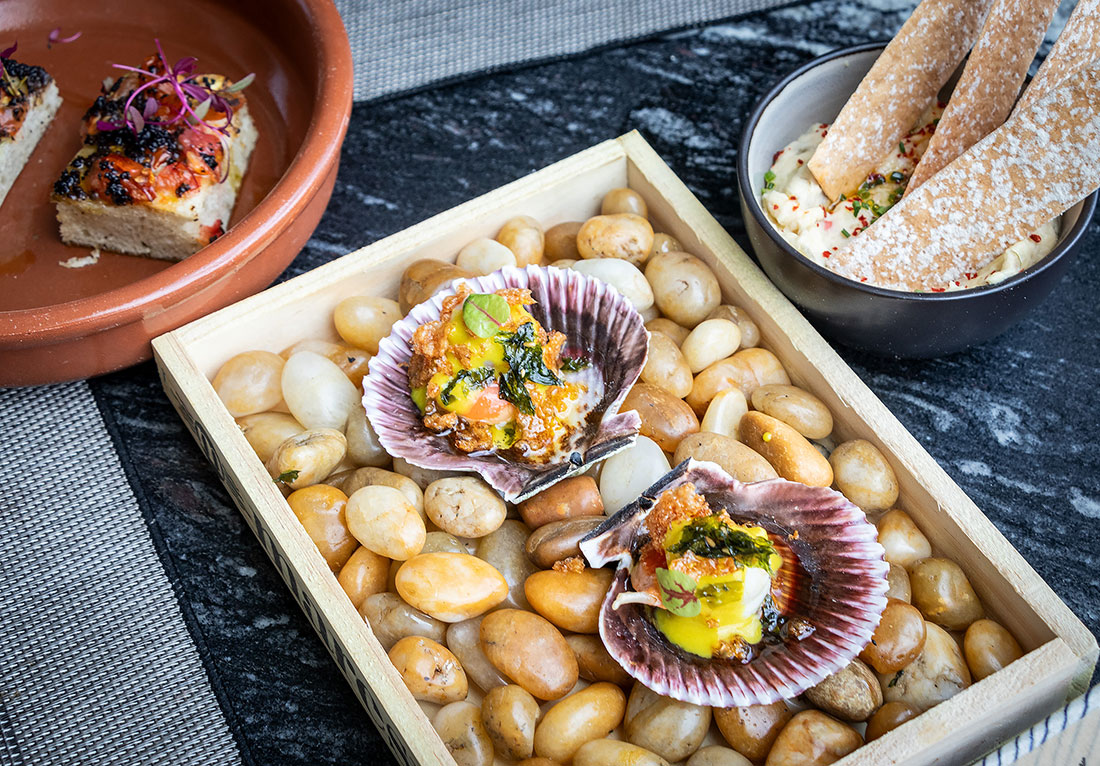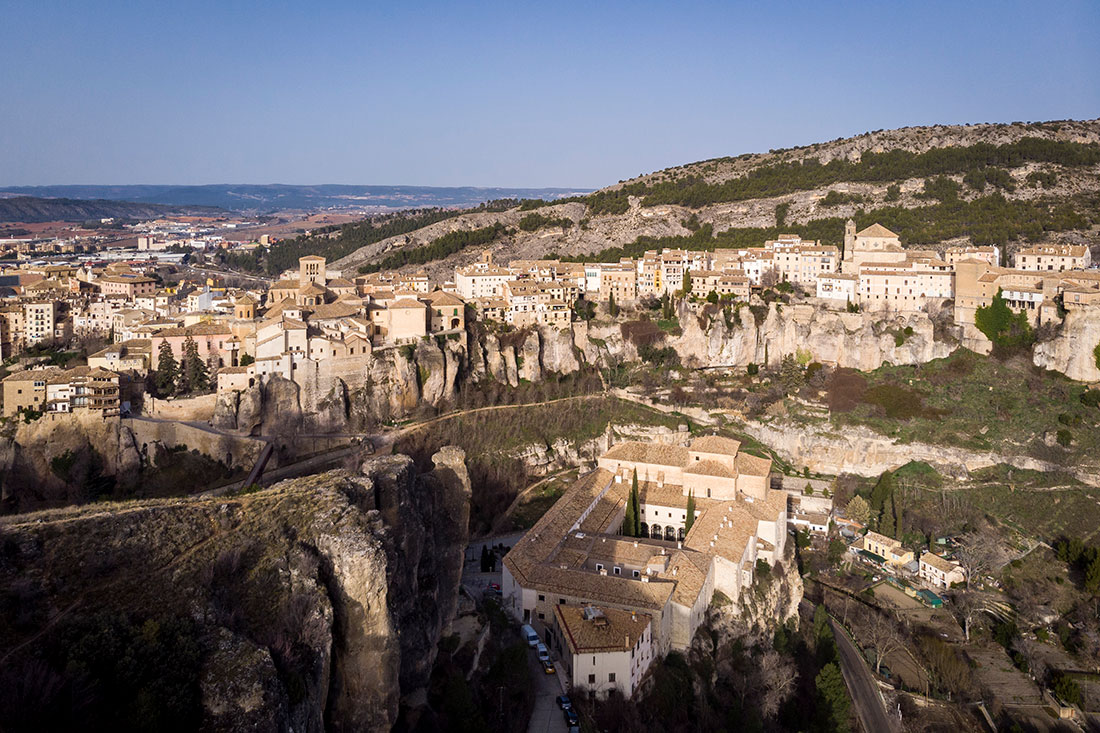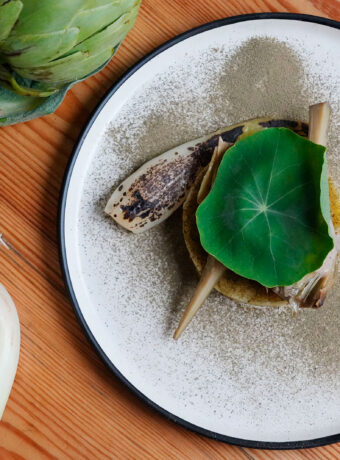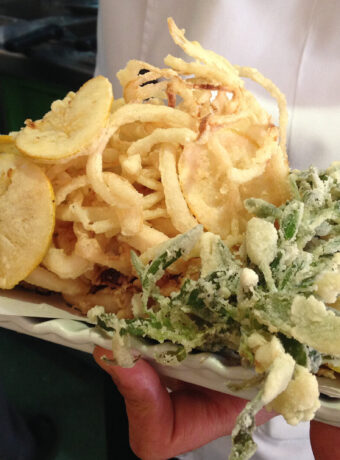Cuenca is known for its old town, which is a UNESCO World Heritage Site. The city, which is Spain’s gastronomic capital in 2023, also offers exquisite gastronomy. Cuenca is just an hour by train from Madrid and is ideal for a day or weekend visit.
Things to do in Cuenca
1 The hanging houses
Cuenca’s most famous building complex is Casa Colgadas (the Hanging Houses), which consists of a series of half-timbered buildings and supporting buildings that are connected. The name comes from the fact that the balconies of the houses literally hang over the cliff edge towards the Huécar river gorge in Cuenca’s old town.
The hanging houses date back to the 15th century and consist of two to three floors. Today it houses a couple of restaurants and the Cuenca Museum of Abstract Art.
The most beautiful view of the hanging houses is from the iron bridge, San Pablo, which runs across the gorge. From here you also have a view of Cuenca’s enjoyable neighborhood in the background.
Casa Colgadas, C. Canónigos
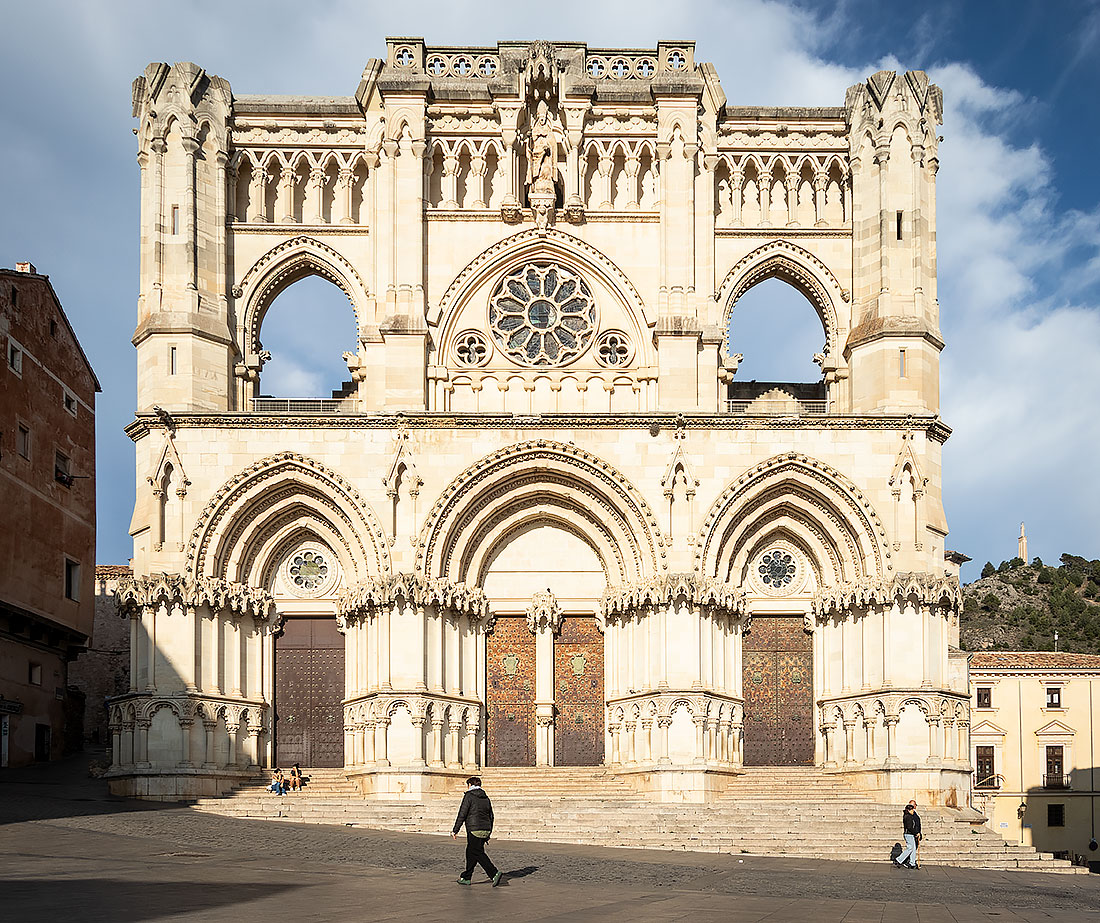 2 Cuenca Cathedral
2 Cuenca Cathedral
In a corner of the city’s central square sits Cuenca’s cathedral, Nuestra Señora de Gracia, which is easy to spot no matter which side street you come from.
The cathedral was built between the 12th and 13th century and is one of Spain’s earliest examples of Gothic architecture with a strong French influence.
In 1902, the bell tower collapsed and destroyed the facade, which was then only partially rebuilt in neo-Gothic style.
Inside, the high vaulted ceilings and unusual abstract glass windows (from the 20th century) are unique in Spain, as are the artworks by El Greco, among others, and the main altar by Ventura Rodríguez.
Catedral de Cuenca, Plaza Mayor
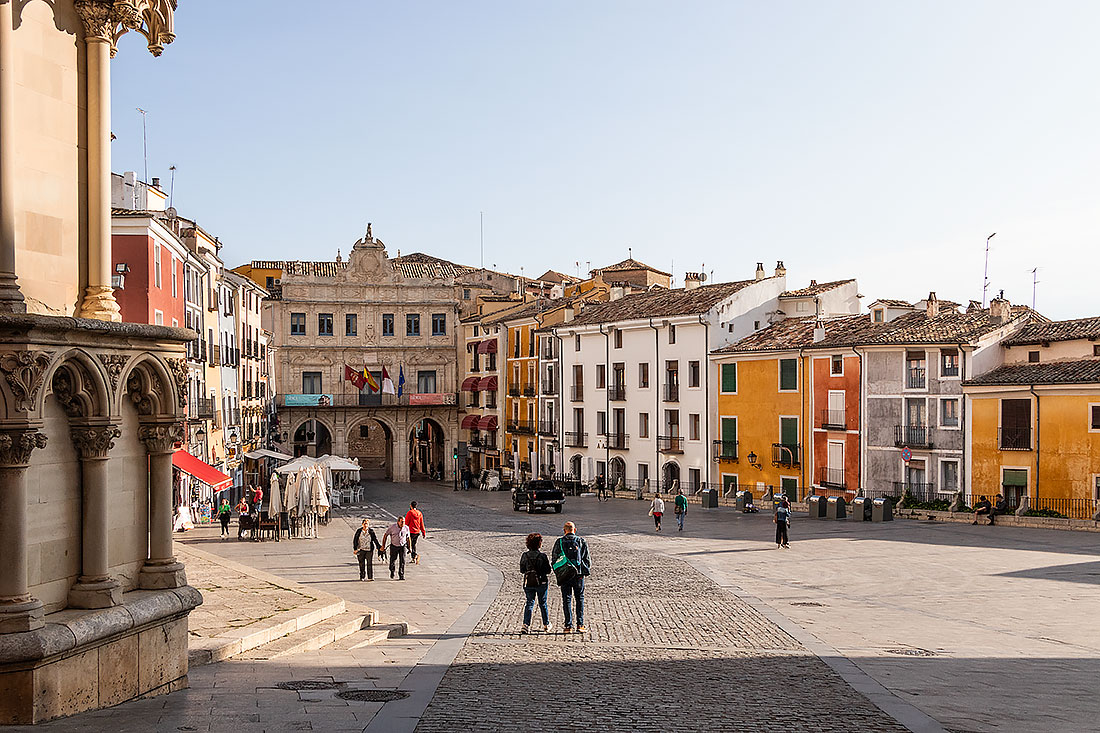 3 Coffee in Cuenca’s central square
3 Coffee in Cuenca’s central square
The charming Plaza Mayor in Cuenca, with its colorful houses and small cafés with terraces, is a natural gathering point for locals. Here you can enjoy where you can enjoy a beer or a cup of coffee while breathing in the local life of the square.
As well as enjoying the view of the cathedral, you can also admire the city’s town hall with its three arches at the end of the square. The building is baroque in style and dates from the 18th century. Also noteworthy is the Petra Monastery, with its pink facade, built between the 16th and 18th centuries.
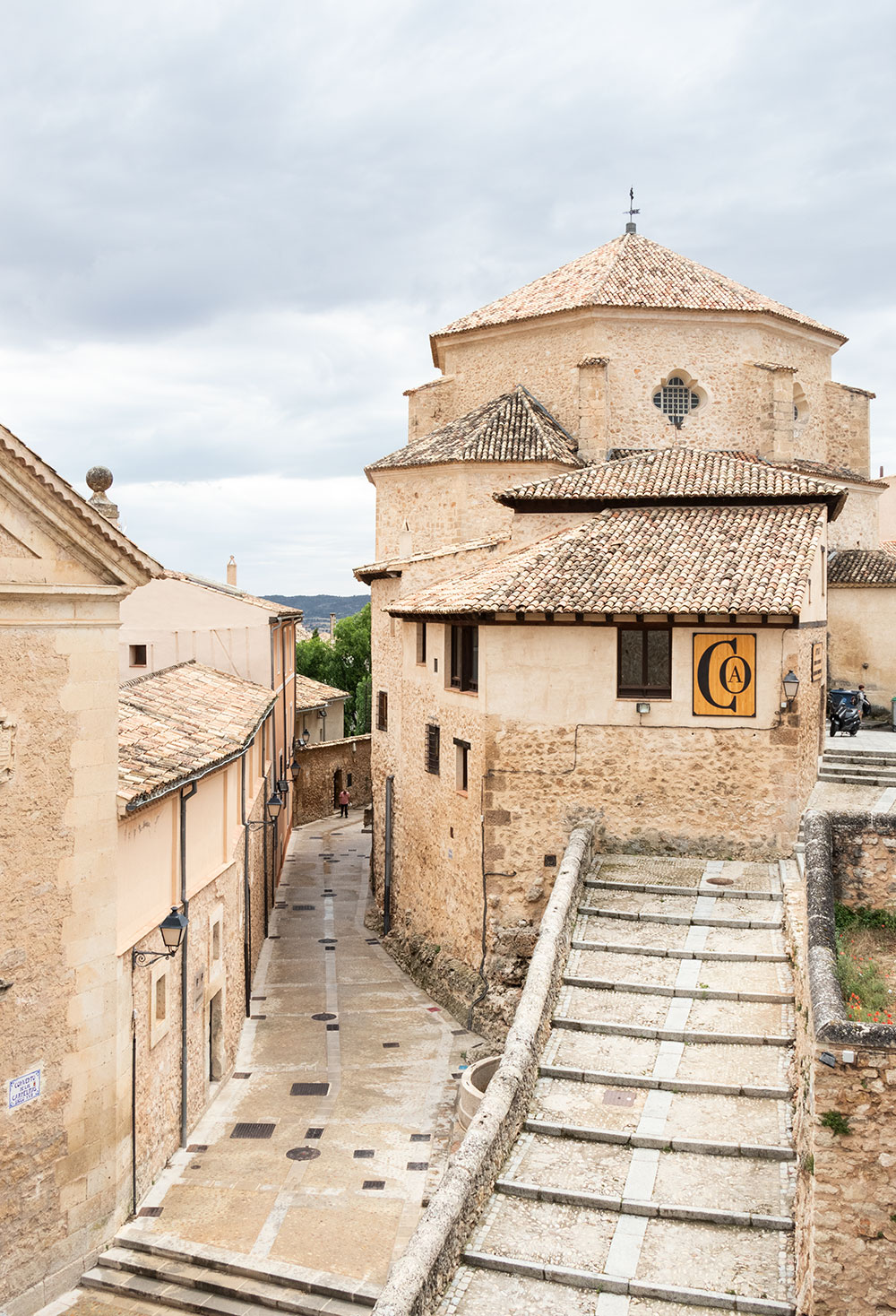 4 Walk in the old town
4 Walk in the old town
Cuenca’s medieval old town is incredibly well-preserved, so explore the steep streets and feel like you’re in a bygone era.
The walled city was built by the Moors and after it was recaptured by the Christians in the 12th century, it was expanded with the cathedral and the hanging houses and the royal and episcopal city.
In the well-preserved district you’ll find fine examples of architecture from the 12th to 18th centuries, including churches, towers and monasteries, as well as plenty of vantage points with stunning views of the countryside. In the narrow streets you will also find several small shops and restaurants behind the facades.
I went on a guided tour of the old town, which included a visit to the cathedral. I recommend it if you want to delve into the city’s history. You can book a guided tour in Cuenca (advertising link)
5 The Museum of Abstract Art
Cuenca’s Museum of Abstract Art (Museo de Arte abstracto Español) is housed in Casa Colgadas (the Hanging Houses) and has earned the city a reputation as an avant-garde city.
The museum was founded by Filipino abstract painter Fernando Zóbel in 1966 in collaboration with a number of other abstract artists. The museum houses one of the most important collections of Spanish abstract art from the 1950s to the 1960s, including paintings, sculptures and prints. The over 30 artists include Millares, Chillida, Tápies, Sempere, Canogar, Torner, Rueda, Zóbel and Saura.
From the exhibition spaces you get spectacular views of the river gorge and the San Pablo Bridge, which is a work of art in itself.
Museo de Arte abstracto Español, Casas Colgadas
6 Mirador de la Celosa
One of Cuenca’s many breathtaking viewpoints is Mirador de la Celosa, a café with a terrace that is a gathering point for the city’s youth from late afternoon. You can find it from the Plaza Mayor by going under the arches of the Town Hall and left down a narrow staircase on the left.
From the romantic terrace in the old town you can enjoy the view of the church spire with the landscape of the Júcar River as a backdrop. The café offers tapas, salads and pizza.
Mirador de la Celosa, C. San Miguel
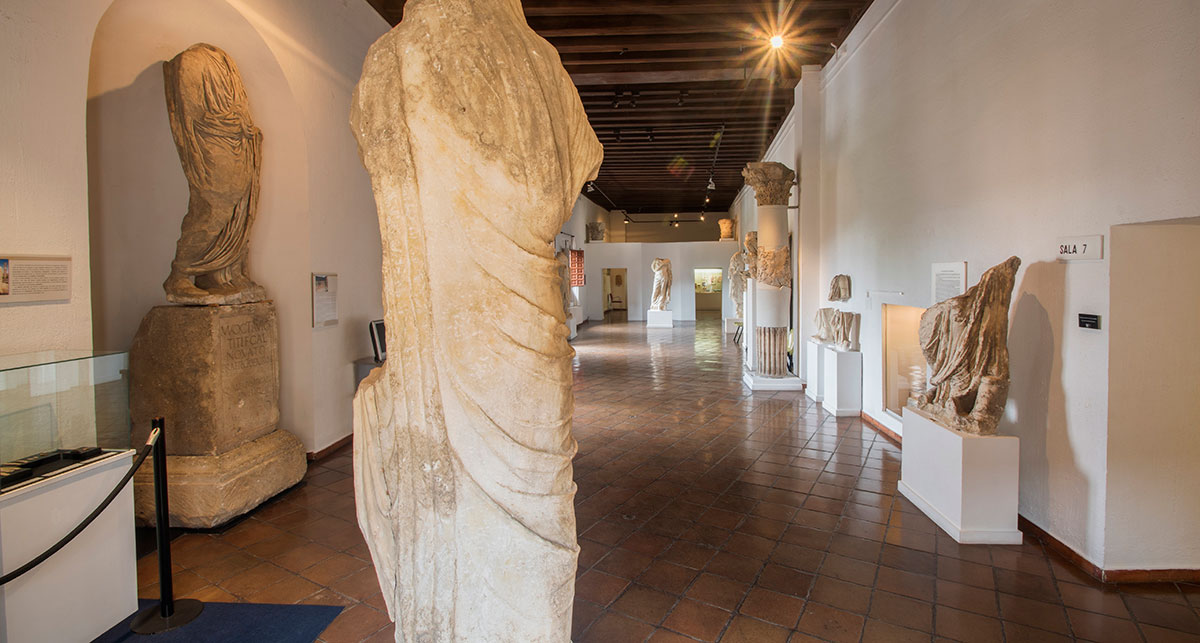 7 The Archaeological Museum
7 The Archaeological Museum
The Museo de Cuenca is housed in a 14th century building in the old town. The facade is adorned with a fine decoration by the painter Miguel Zapata.
The museum opened in 1974, and here you can see a collection of archaeogolic finds that give you a historical summary of the history of the entire Cuenca province.
The museum is divided into three floors. The ground floor is dedicated to prehistory, the first floor to classical archaeology and the second floor to late Roman, medieval and modern times.
Museo de Cuenca, C. Obispo Valero 12
8 Cuenca’s Paleontological Museum
At the top of Cuenca, the city’s pioneering paleontology museum, Museo de Paleontologia de Castilla-La Mancha (MUPA), is worth a visit for anyone interested in Spain’s prehistory.
Outside, you’ll be greeted by large dinosaur figures. Inside, the child-friendly dinosaur exhibition ‘Tierra de Dinosaurios’ is impressive, fun and educational. In addition, the museum houses various galleries with fossils (of extremely high quality), skeletons and skulls, as well as models of huge reptiles from the Cretaceous period.
MUPA – Museo de Paleontologia de Castilla-La Mancha, C. del Río Gritos 5
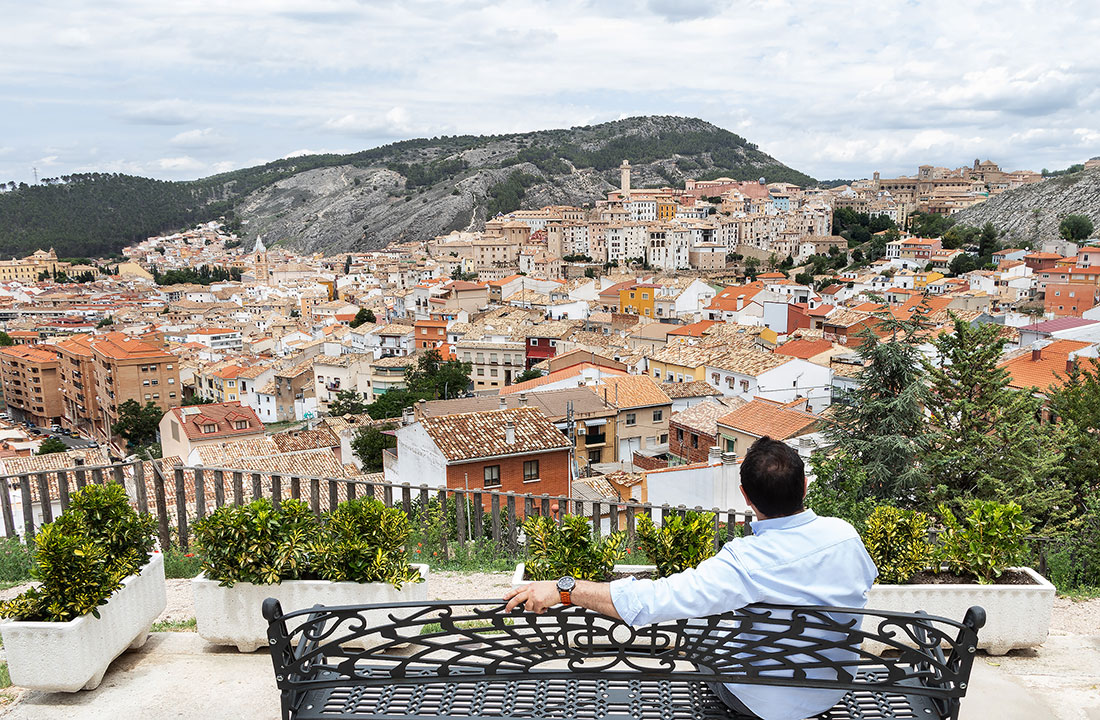 9 Enjoy the city’s most beautiful views
9 Enjoy the city’s most beautiful views
In the gardens of the Paleontological Museum you’ll find the city’s most spectacular viewpoint, not to be missed. Here you’ll enjoy 360-degree views of Cuenca’s rooftops and landmarks in the old town.
If available, enjoy the view from the beautifully designed black iron bench, which the museum has dubbed “the 2nd most beautiful bench in the world” (the most beautiful is in Cabo de Vidio in Cudillero, Asturias)
El segundo banco más bonito del mundo
Where to eat in Cuenca
Restaurant Casa Colgadas
Cuenca’s gastronomy has come under the spotlight after the city was named the Spanish Capital of Gastronomy (Capital Española de la Gastronomia) in Spain in 2023.
One of Cuenca’s hippest chefs is Jesús Segura, who runs the restaurant in the hanging houses (Casa Colgades) and this year received a recommendation in the Michelin Guide and a sol in the Spanish Guía Repsol.
The small restaurant, with seating for 18 guests, is decorated with black walls, floors and furniture to make you feel like you’re sitting in a small cave with stunning views over the steep cliff edge down into the Huécar Gorge and the San Pablo Bridge.
Casa Colgadas serves a 15-course tasting menu with a seasonally changing wine list. In Segura’s dishes, Cuenca’s ingredients, including game, vegetables, honey, almonds and herbs, take center stage, reinterpreting the province’s traditional dishes in creative ways and adding a touch of inspiration from the cuisines of other countries. Servings include rooster, pickled rabbit, lamb, mushrooms, beans, oysters and eel, as well as a reinterpretation of the local honey and almond cake ‘alajú’.
The price for the menu is 145 euros including wine menu.
Restaurante Casa Colgadas, Calle Canónigos 3
Raff San Pedro
“Feel the history of Cuenca within its walls” is the slogan of San Pedro restaurant. The location is also one of the city’s best in the historic old quarter
The kitchen is led by one of Cuenca’s younger, hyped chefs, Miguel Escutia Laín, whose mission is to bring Cuenca’s traditional cuisine into the 21st century. And he does it so well that his restaurant has been recommended in the Michelin Guide.
Located in the cozy basement of an aristocratic stone mansion, the restaurant is both cozy and intimate, and the waiters balance attentive service and discretion to perfection.
Raff serves a la carte and a menu prepared with ingredients sourced from Cuenca’s orchards, fields and mountains. The menu consists of snacks, four starters, two main courses, dessert and sweets and costs 50 euros excluding drinks. Servings include foie gras with mushroom crumble, sautéed spinach with raisins and pine nuts, local cheeses, octopus with yams and aioli, lamb shoulder roasted in its own juices, hare and pheasant in La Mancha gazpacho and the dessert, which is a variation on Cuenca’s golden ingredient – honey.
The dishes are elegant and you get great value for money at Raff.
Raff San Pedro, C. San Pedro 58
Natura
Natura is located at the Paleontological Museum overlooking the city from the restaurant’s large panoramic windows and terrace and is a great place to have lunch if you want to enjoy the view. The restaurant is led by Chef Nacho Ruiz, who has a past as a culinary advisor on the Spanish version of Masterchef.
Natura Bistro y Restaurante offers several menus as well as a la carte. The theme is market cuisine and the dishes are simple and prepared with local ingredients. I tried the ejecutivo menu, which consists of six cold and hot snacks, a main course and dessert, and a wine menu. I had mussels with pickled onions, croquetas (fried balls with ham and bechamel), hummus, focaccia with tomato and spices, grilled fish with tomato and potato puree and cheesecake with strawberries and mango. The menu costs just 25 euros. Other menus are available at prices up to 40 euros. The wine menu with wines from local producers costs 16 euros.
Natura, C. del Río Gritos 5
Atmospheric hotels in Cuenca
Posada de San José
Posada de San José is housed in a building from 1621 that has been lovingly renovated with respect for history, so it feels like stepping into a time warp. Jennifer Morter and Antonio Cortinas have been running the hotel since 1983 with personalized service and a homey feel as their driving force.
Located in the heart of the old town, you’ll have great views of the hotel gardens, Huécar Gorge and the old town from the restaurant and some of the rooms. It is recommended to book a room with a terrace so you can enjoy the view in a private setting.
Posada de San José has 21 rooms decorated with stone floors, wood paneling and historic dark furniture. Most of the rooms have a seating area, and there are all modern amenities such as internet and modern bathroom facilities.
The restaurant offers stunning panoramic views of the countryside and gardens, serves breakfast daily and is also open for lunch, tapas and dinner a few days a week.
Read more and check availability (advertising link)
Posada de San José, Rda. Julián Romero 4
Parador de Cuenca
The Parador de Cuenca is a 4-star luxury hotel located in one of Cuenca’s most emblematic buildings. The 1523 building, in late Gothic Plateresque style, formerly housed the monastery of San Pablo and is closely connected to the bridge of the same name. The hotel is decorated in a mix of traditional and modern style and features a restaurant in the old glass monastery, an interior terrace and an outdoor pool with stunning panoramic views.
The elegant and luxurious rooms all have stunning views and historic dark furniture, as well as modern amenities such as air conditioning, minibar, room service and bathrooms with modern amenities. Choose between Standard and Superior rooms.
Read more and check availability (advertising link)
Parador de Cuenca, Subida a San Pablo
How to get to Cuenca
From Madrid, high-speed trains to Cuenca depart from Atocha and Chamartín Station. The train ride lasts about an hour. You can buy your train ticket online via Renfe.
